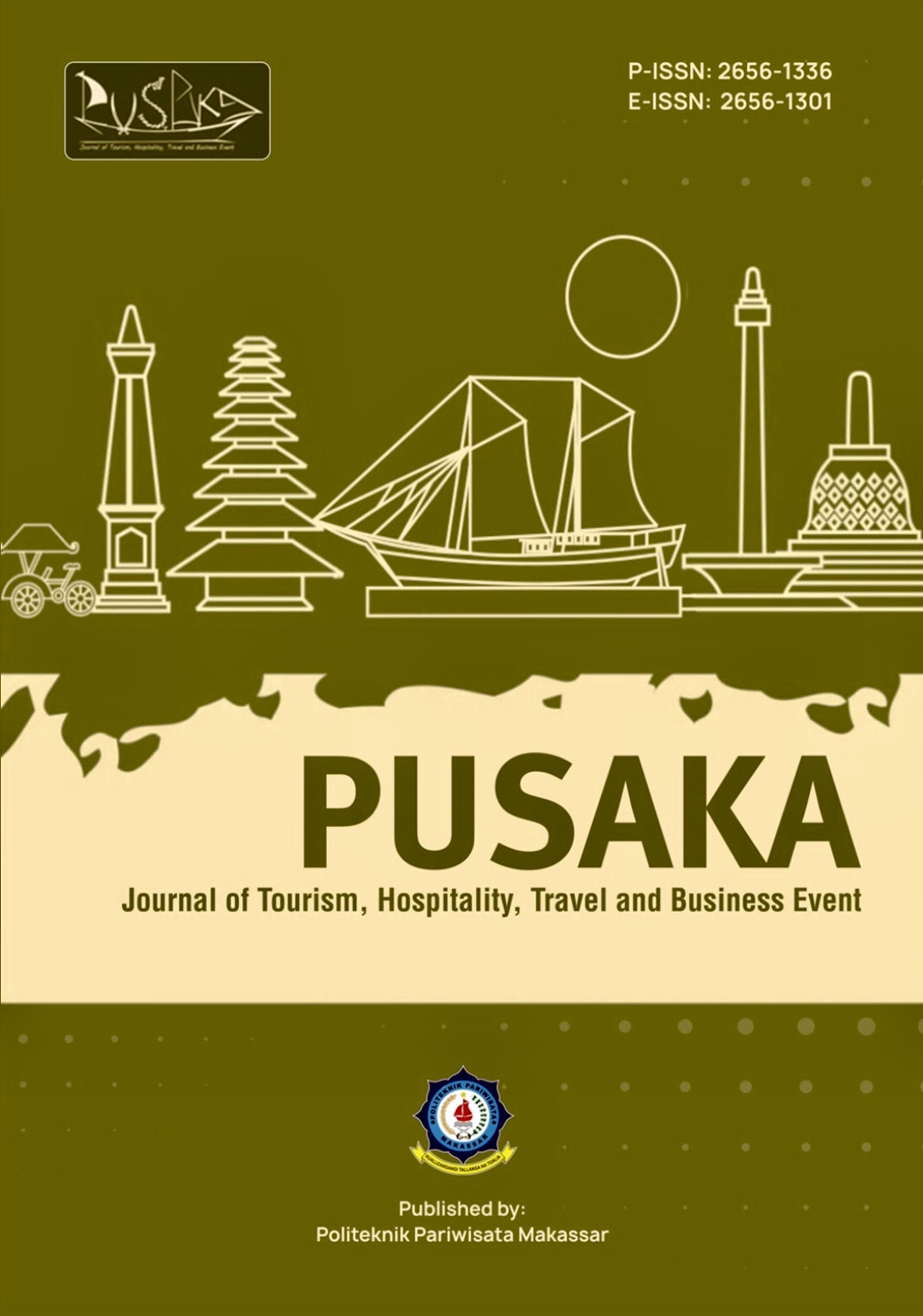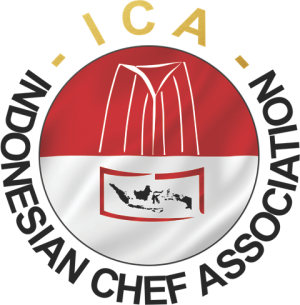Analysis of the Potential of Mukapayung Village as a Sustainable Tourism Destination Based on Sports Tourism
DOI:
https://doi.org/10.33649/pusaka.v4i2.116Keywords:
Tourist Destinations, Tourist Villages, Pentahelix, Sports TourismAbstract
Tourism development in the West Bandung area is currently a serious concern for the local government, one of which is by developing tourist villages. Mukapayung Village, located in Cililin District, is one of the villages designated by the local government as a tourist village. This village has natural beauty with a stretch of rocks that are in harmony with the flow of the river and towering cliffs. This study tries to explore more deeply the potential that Mukapayung village has to be developed into a sportss tourism-based tourism village in West Bandung Regency. The analysis of tourism potential is carried out using a pentahelix approach in order to obtain a picture of the potential of destinations that specifically examines from the aspects of society, government, the role of the media, business actors, and academics so as to support sustainable tourism. This study uses an exploratory qualitative approach. The results of the study obtained an overview that Mukapayung has the potential to be developed as a sports tourism destination by organizing attractions such as: tracking, cycling, climbing, and other sports attractions. A number of tourism components that still need to be developed or improved to support the acceleration of Mukapayung include destination facilities, accommodation, and amenities. As for the management and development of destinations, Mukapayung is currently managed independently by the community through village organizations (Bumdes), without involving various elements such as the tourism office, business actors, academics, and the role of mass media as well as the community and lovers of sportss tourism.
References
Andersson, T. D., Mossberg, L., & Therkelsen, A. (2017).
Food and tourism synergies: Perspectives on
consumption, production and destination
development. Taylor & Francis.
Chamidah, N., Putra, A. H. P. K., Mansur, D. M., &
Guntoro, B. (2021). Penta helix Element Synergy as
an Effort to Develop Tourism Villages in Indonesia.
Jurnal Manajemen Bisnis, 8(1), 01–22.
Cho, H., Joo, D., & Chi, C. G. (2019). Examining
nostalgia in sport tourism: The case of US college
football fans. Tourism Management Perspectives, 29,
–104.
Dolan, R., Seo, Y., & Kemper, J. (2019). Complaining
practices on social media in tourism: A value cocreation and co-destruction perspective. Tourism
Management, 73, 35–45.
Drakh, T. P., Salzhanova, Z. A., Alpeissova, S. E.,
Kozhakhmetova, M. K., Kazkenova, A., Sabirova, R.,
& Omarkhanova, Z. M. (2021). Labor Productivity as
an Indicator of Efficiency Interaction of Higher
Education and Tourism Business. Journal of
Environmental Management and Tourism, 12(2),
–551.
Gibson, H. J. (1998). Sport tourism: A critical analysis of
research. Sport Management Review, 1(1), 45–76.
Győri, F., & Balogh, L. (2017). Rethinking the
relationship between sport, recreation and tourism. In
Leisure, Health and Well-Being (pp. 121–133).
Springer.
Henama, U. S., Mangope, D., & Strydom, A. J. (2019).
Making community-based tourism sustainable:
Evidence from the Free State province, South Africa.
Hinch, T. D., & Higham, J. E. (2001). Sport tourism: A
framework for research. International Journal of
Tourism Research, 3(1), 45–58.
İlkan, M., Beheshti, M., Rahimi, S., & Atalar, E. (2017).
The role of information and communication
technology (ICT) in tourism education: A case study
of higher education students.
Jiménez-García, M., Ruiz-Chico, J., Peña-Sánchez, A. R.,
& López-Sánchez, J. A. (2020). A bibliometric
analysis of sports tourism and sustainability (2002–
. Sustainability, 12(7), 2840.
Karim, Z. (2018). The impact of social media on tourism
industry growth in Bangladesh. International Journal
of Economics, Commerce and Management, VI (8),
–482.
Kersulić, A., Perić, M., & Wise, N. (2020). Assessing and
Considering the Wider Impacts of Sport-Tourism
Events: A Research Agenda Review of Sustainability
and Strategic Planning Elements. Sustainability,
(11), 4473.
Lian, S. B., & Yoong, L. C. (2018). Customer
Engagement In Social Media And Tourism Brand
Performance Implications. Journal of Design, Art and
Communication, 1186–1194.
Liburd, J. J., Mihalic, T., & Guia, J. (2018). Values in
tourism higher education: The European master in
tourism management. Journal of Hospitality, Leisure,
Sport and Tourism Education, 22, 100–104.
Mayaka, M., Croy, W. G., & Cox, J. W. (2018).
Participation as motif in community-based tourism: A
practice perspective. Journal of Sustainable Tourism,
(3), 416–432.
Pan, S.-Y., Gao, M., Kim, H., Shah, K. J., Pei, S.-L., &
Chiang, P.-C. (2018). Advances and challenges in
sustainable tourism toward a green economy. Science
of the Total Environment, 635, 452–469.
Pradhipta, R. A., & Nofiyanti, F. (2021). Penta Helix
Strategy in Rural Tourism (Case Study of Tugu Utara
Bogor). E3S Web of Conferences, 232, 04010.
Rasoolimanesh, S. M., Ramakrishna, S., Hall, C. M.,
Esfandiar, K., & Seyfi, S. (2020). A systematic
scoping review of sustainable tourism indicators in
relation to the sustainable development goals.
Journal of Sustainable Tourism, 1–21.
Ritchie, B. W., & Adair, D. (2004). Sport tourism: An
introduction and overview. Sport Tourism:
Interrelationships, Impacts and Issues, 15(6), 1–29.
Rozanova, T. P., Stytsiuk, R. Y., Artemyeva, O. A., &
Motagali, Y. B. (2018). Assessment of the tourism
potential of the Russian Federation. В Сборнике:
Financial and Economic Tools Used in the World
Hospitality Industry Proceedings of the 5th
International Conference on Management and
Technology in Knowledge, Service, Tourism and
Hospitality, 183.
Singh, S., Dash, T. R., & Vashko, I. (2016). Tourism,
ecotourism and sport tourism: The framework for
certification. Marketing Intelligence & Planning.
Umiyati, S., & Tamrin, M. H. (2021). Penta Helix
Synergy in Halal Tourism Development. 4th
International Conference on Sustainable Innovation
–Social, Humanity, and Education (ICoSIHESS
, 75–81.
Wahyudi, D., Hasanah, E. U., & Zulkarnain, A. (2021).
Tourist Village Development Penta Helix Based the
Analytical Hierarchy Process Approach. 3rd
International Conference of Banking, Accounting,
Management and Economics (ICOBAME 2020),
–134.
Weed, M., & Bull, C. (2012). Sports tourism:
Participants, policy and providers. Routledge.
Weighill, A. J. (2009). Women Who Play While They Are
Away: Exploring the Assumptions of Sport Tourism.
University of Alberta.
Wijaya Sari, C. (2018). Bandung Barat Kembangkan Desa
Wisata Berbasis Kearifan Lokal—PikiranRakyat.com. www.pikiran-rakyat.com.
https://www.pikiran-rakyat.com/bandung-raya/pr-
/bandung-barat-kembangkan-desa-wisataberbasis-kearifan-lokal-432430
Yeh, C.-C., Lin, C.-S., & Huang, C.-H. (2018). The total
economic value of sport tourism in Belt and Road
development—An environmental perspective.
Sustainability, 10(4), 1191.
Zielinski, S., Kim, S., Botero, C., & Yanes, A. (2020).
Factors that facilitate and inhibit community-based
tourism initiatives in developing countries. Current
Issues in Tourism, 23(6), 723–739.
Downloads
Published
How to Cite
Issue
Section
License

This work is licensed under a Creative Commons Attribution-ShareAlike 4.0 International License.






















